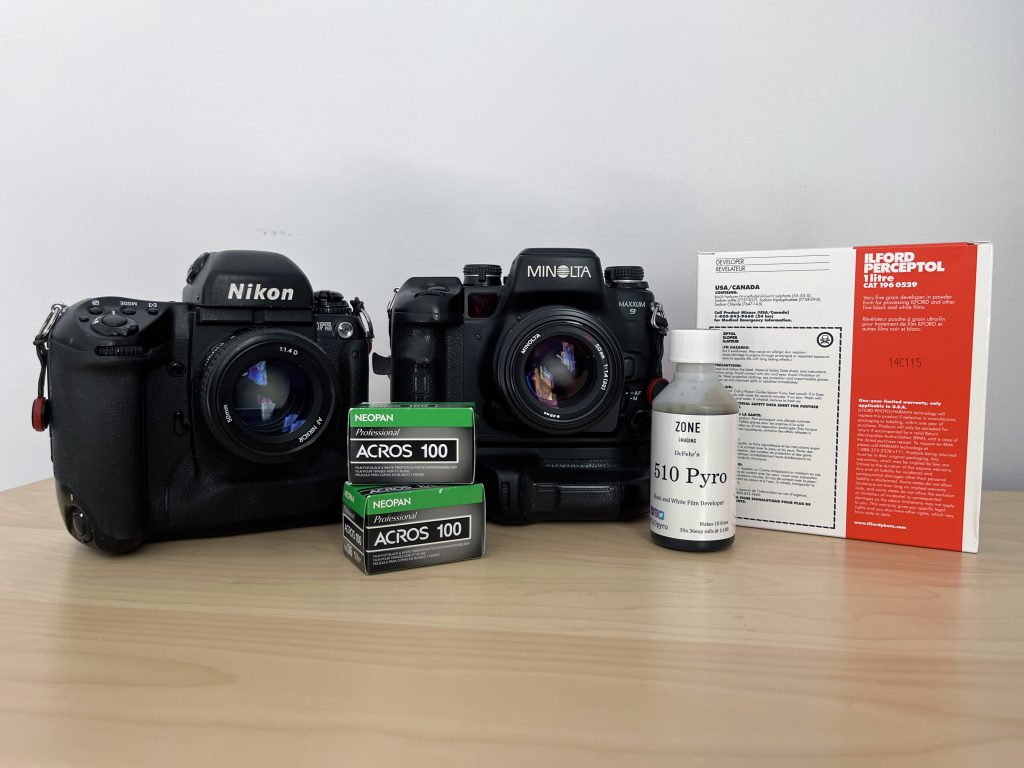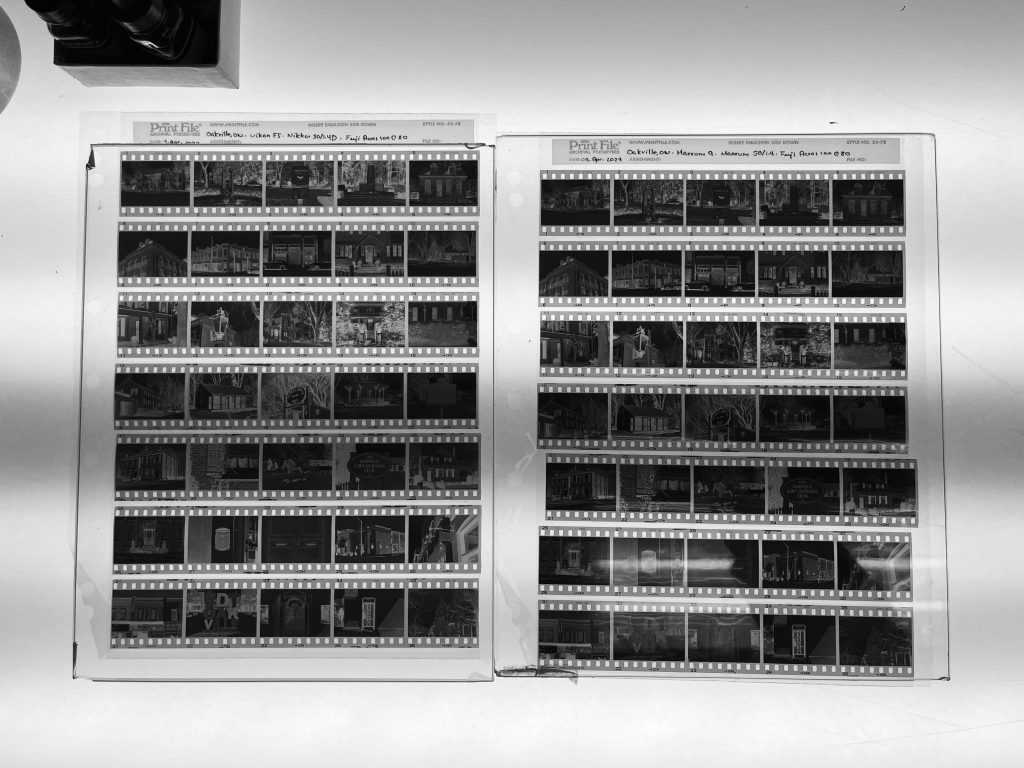It has been some time since I wrote a verse post, so it’s time I tried this again. But rather than pitting cameras against each other, I will be pitting developers against each other. The idea behind this came from my good friend James Lee, who loves to show off the power of the Fuji Acros 100 when it is slightly overexposed and developed in Ilford Perceptol. I’ve worked with this combination, and it is impressive. Recently, James has also been working with 510-Pyro. I asked myself which is better, namely when put head-to-head, Perceptol and 510-Pyro?

The setup is a simple one, I have two rolls of Fujifilm Acros 100, the original stuff, not the new Acros II, supplied by another good friend, Trevor Black. Each roll I’m shooting at ASA-80 and then will be developing them normally. My two testbed cameras are the Nikon F5 (the Pyro Roll) and the Maxxum 9 (the Perceptol Roll), the reason I picked these two is that I have a 50mm f/1.4 lens that have the same optical construction and each are on equal footing. To keep things even more level I’ll be shooting them in Aperture Priority and at the same aperture on each, with the metering set to centre-weighted. In the images, you will see the image developed with Perceptol on the left and the 510-Pyro on the right.

If you have used pyro-based developers in the past, you’re immediately going to be able to see the difference between the two, thanks to the staining action by the developing agent in 510-Pyro. Sadly, because I had to turn the above image to B&W, that doesn’t carry over too much, as the colour version had an ugly yellow line caused by the fluorescence tubes used in the lightbox. In both cases, the negatives are denser than expected from a 100-speed film, but I did not adjust the development times to compensate for the 1/3-stop over-exposure. I don’t count this as bad as more density, which makes scanning my negatives easier, and I can better adjust down than up in the digital space. The one thing that surprised me was that there was some difference in density between the two, but it was minimal and only on a couple of frames. When looking at the different sets through a loupe, both showed a similar look and feel, which indicates that Acros 100 is consistent between developers. Other than that, the two sets of negatives are incredibly identical in how they present themselves. This fact is carried through with the scanning process as I had to make almost no adjustments in Silverfast between scanning the two sets of negatives.





The real problem with working with film in a digital age is the scanner and the post-processing; you can honestly make your film look like almost anything you want. Now, I only make a few adjustments after scanning my images. I don’t do a lot of heavy editing, usually some brightness adjustments along with curves and levels to get the image to where I have it in my mind. Like the negatives, the scanned images started looking incredibly similar; however, once I got them into Photoshop to start making the adjustments, the differences ended. For the roll I developed with 510-Pyro, I had to do a lot less work, especially around lowering the brightness, and the levels and curves evened out. I did have to drop the brightness far more with the Perceptol images. In the final photos, the contrast looked similar in some cases, with only minor, almost unnoticeable results. In others, the difference is apparent. The one thing that I did notice is that the grain structure and sharpness are practically the same, with the 510-Pyro putting out a bit more visible grain than the Perceptol-developed frames, but again, you have to dig deep into the scans to see these differences.





So what’s the real takeaway in all this, well it all depends on what you want the final image to look like and the subject matter. I find both results appealing as they can be applied to different subject matter. I would honestly use Perceptol with Acros 100 (and Acros 100 II) when shooting portraits, especally in a studio and formal setting. The reason is that the contrast is lower and softer. Plus it gives less noticeable grain to help smooth out skin tones. 510-Pyro I would choose when shooting architecture or landscape work when I want that contrast to pop and that edge sharpness to be a hair stronger especially with that noticeable grain. When it comes to photography and even film photography you cannot pick a clear winner as the final product is entirely subjective for the look you as the photographer has in mind. Remember I do these posts to compare and contrast different choices in close conditions. Also to equip those seeking this information online to get a better idea on what different films and developers can do. You can read more about Acros, Ilford Perceptol, and 510-Pyro in their respective reviews.
For some years I used Ilford HP5 @ 200 developed in Perceptol 1:3 for portrait work.
The results were wonderful for that application.